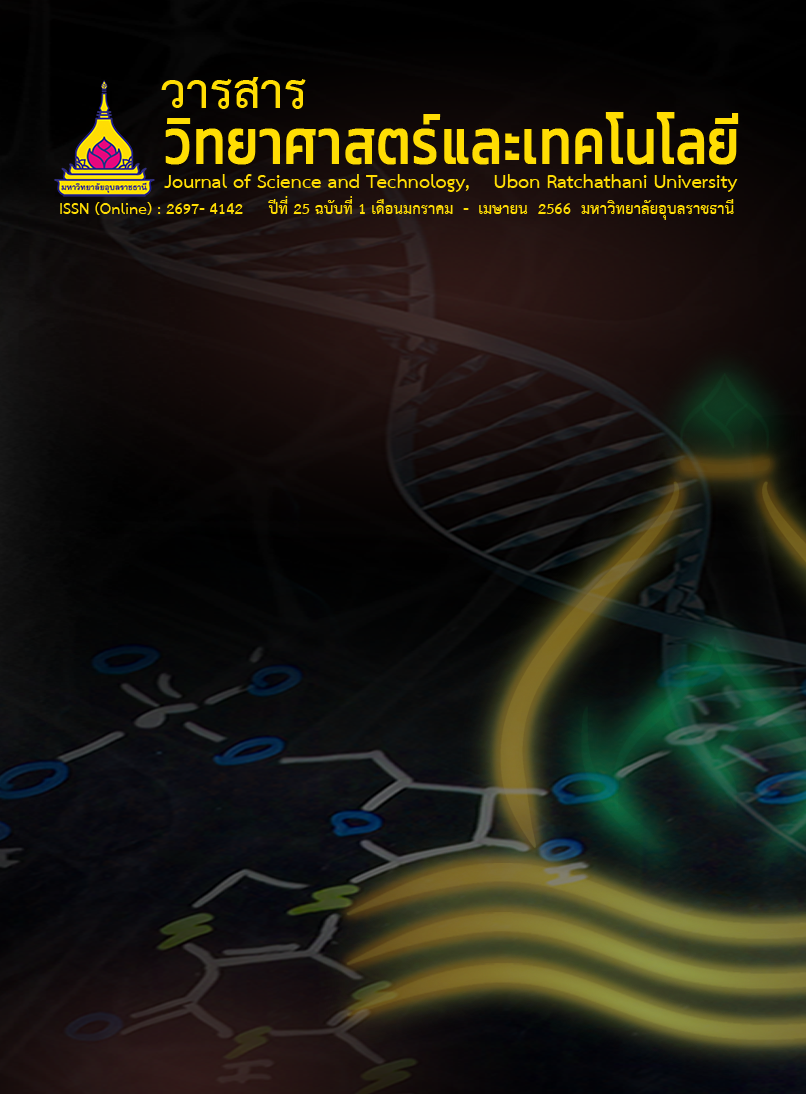Optimization of Models for Hypertension Treatment Prediction with Factor Selection
Main Article Content
Abstract
The purpose of this research was to study factors affecting model building to predict hypertension treatment. In this research, 2,414 records of hypertension treatment were collected from Thung Khao Luang Hospital database during January 2018 to December 2020. In order to select relevant factors to increase performance of the prediction models, Chi-Square test, Gain Ratio and Information Gain were applied. In addition, Decision Tree C4.5, K-Nearest Neighbours, Random Tree, Multilayer Perceptron, and Logistic Model Trees techniques were employed to build models for hypertension treatment prediction. In this research, the researchers used 10-fold cross validation to divide data into learning sets and test sets. Specificity, sensitivity and accuracy of the models were used to determine the model performance. The results showed that factor selection by Gain Ratio was the best approach to increase the specificity and accuracy of the model created by K-Nearest Neighbours which the specificity and accuracy were increased by 15.35% and 3.72%, respectively.
Article Details

This work is licensed under a Creative Commons Attribution-NonCommercial-NoDerivatives 4.0 International License.
บทความที่ได้รับการตีพิมพ์เป็นลิขสิทธิ์ของ วารสารวิทยาศาสตร์และเทคโนโลยี มหาวิทยาลัยอุบลราชธานี
ข้อความที่ปรากฏในบทความแต่ละเรื่องในวารสารวิชาการเล่มนี้เป็นความคิดเห็นส่วนตัวของผู้เขียนแต่ละท่านไม่เกี่ยวข้องกับมหาวิทยาลัยอุบลราชธานี และคณาจารย์ท่านอื่นๆในมหาวิทยาลัยฯ แต่อย่างใด ความรับผิดชอบองค์ประกอบทั้งหมดของบทความแต่ละเรื่องเป็นของผู้เขียนแต่ละท่าน หากมีความผิดพลาดใดๆ ผู้เขียนแต่ละท่านจะรับผิดชอบบทความของตนเองแต่ผู้เดียว
References
Zhou, B. and et al. 2021. Global epidemiology, health burden and effective interventions for elevated blood pressure and hypertension. Nature Reviews Cardiology.18: 785-802.
Panmong, N. 2019. World Hypertension Day Campaign Message Issues. http://www.thaincd.com. Accessed 19 July 2021. (in Thai)
Alsarah, A., Alsara, O. and Bachauwa, G. 2019. Hypertension management in the elderly: What is the optimal target blood pressure? Heart Views. 20(1): 11-16.
Somjettana, S. and Thongkam, J. 2021. Performance comparison of data mining techniques for building classification models of the parent toward children who use smart phone. Journal of Science and Technology, Ubon Ratchathani University. 23(1): 21-30. (in Thai)
Pischarat, K., Ransin, C. and Molpanang, G. 2016. Developing a type 2 diabetes prevention model for community diabetes risk groups Chiang Rai. Journal of Nursing Science Chulalongkorn University. 28(3): 132-146. (in Thai)
Guttikonda, G., Katamaneni, M. and Pandala, M. 2019. Diabetes data prediction using spark and analysis in Hue over big data. In: Proceedings of the 3rd International Conference on Computing Methodologies and Communication, 27-29 March 2019. Erode, India.
Khunsuk, T. and Thongkam, J. 2020. Feature selection method for improving customer reviews classification. RMUTI JOURNAL Science and Technology. 13(1): 129-143. (in Thai)
Aboalnaser, S. and Almohammadi, H. 2019. Comprehensive study of diabetes miletus prediction using different classification algorithms. In: Proceedings of the 12th International Conference on Developments in eSystems Engineering, 7-10 October 2019. Kazan, Russia.
Alpan, K. and İlgi, G. 2020. Classification of diabetes dataset with data mining techniques by using WEKA approach. In: Proceedings of the 4th International Symposium on Multidisciplinary Studies and Innovative Technologies, 22-24 October 2020. Istanbul, Turkey.
Sujan, R. and et al. 2020. Chi-squared based feature selection for stroke prediction using AzureML. In: Proceedings of the 2020 Intermountain Engineering, Technology and Computing, 2-3 October 2020. Orem, UT, USA.
Sittichat, S. 2017. Study of educational attributes using data mining technique. Information Technology Journal. 13(2), 20-28. (in Thai)
Khongswat, A. and et al. 2019. The system of stress level prediction using decision tree. Rattanakosin Journal of Science and Technology. 1(2): 13-26. (in Thai)
Thongkam, J. 2012. Bagging random tree for analyzing breast cancer survival. KKU Research Journal. 17(1): 1-13.
Boonta, S. 2019. Forecasting water levels using data mining techniques: A case study at Nong Han Lake, Sakon Nakhon, Thailand. SNRU Journal of Science and Technology. 11(2): 64-70.
Landwehr, N., Hall, M. and Frank, E. 2005. Logistic model trees. In: Furnkranz, J. (ed.) Machine Learning, Dordrecht, Netherlands: Springer Science+Business Media, Inc.
Srisuk, U. and Thongkam, J. 2021. The efficiency comparison of data mining techniques for patient incidence. Journal of Science and Technology, Mahasarakham University. 40(2): 37-43. (in Thai)

